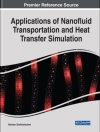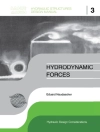This book covers the fundamental principles of molecularly imprinted polymers (MIPs) and their synthesis methodologies, offering readers a solid understanding of these unique materials. It delves into the design and selection of template molecules for imprinting, as well as polymerization techniques and strategies for optimizing MIP performance. With a focus on real-world applications, the book showcases the wide range of environmental health problems that MIPs can address. It discusses the detection and quantification of pollutants in air, water, and soil using MIP-based sensors and biosensors. Additionally, it explores the use of MIPs in environmental remediation, such as the adsorption and removal of contaminants, as well as the development of MIP-based materials for water and soil treatment. The book also highlights the analytical applications of MIPs in environmental health, including separation and purification techniques, sample preparation, and preconcentration methods. It examines how MIPs can be integrated into analytical instrumentation and detection systems to enhance environmental analysis. By bringing together interdisciplinary knowledge from the fields of environmental science, chemistry, polymer science, analytical chemistry, and environmental engineering, this book provides readers with a comprehensive understanding of the potential of MIPs as artificial antibodies for environmental health. With its emphasis on real-world applications and case studies, it offers practical insights that researchers, academics, and professionals can apply in environmental monitoring, remediation, and analysis projects.
Table of Content
Chapter 1. Overview of molecular recognition and the concept of MIPs.- Chapter 2. Synthesis methods and strategies for MIPs.- Chapter 3. Molecularly Imprinted Polymers: Cutting-Edge Characterization Strategies.- Chapter 4. MIPs in analytical instrumentation and detection.- Chapter 5. Molecularly Imprinting Technology and Narrow-Bandgap Semiconductors Application on Photoelectrochemical Sensors Construction.- Chapter 6. Molecularly imprinted polymer-based sensors for the monitoring of antibiotic traces and microorganisms in water samples to combat antimicrobial resistance.- Chapter 7. MIP-based sensors and biosensors for environmental monitoring.- Chapter 8. Nano-molecularly Imprinted Polymers for Advanced Environmental Monitoring: Synthesis, Applications, and Performance .- Chapter 9. Molecularly imprinted polymers as highly selective sorbents in sample preparation techniques for extracting emerging pollutants from environmental water.- Chapter 10. Molecularly imprinted polymers based sample preparation and preconcentration methods .- Chapter 11. Molecularly Imprinted Polymers based Separation and Purification Techniques.- Chapter 12. Adsorption and removal of contaminants using MIPs. Molecularly Imprinted Polymers.- Chapter 13. Tetracyclines and an Overview of the Preconcentration/extractions method based on molecularly imprinted polymers.- Chapter 14. Limitations and challenges in the practical implementation of MIPs.
About the author
Dr. Santanu Patra is working in the field of materials chemistry, specializing in the integration of functional materials with macro-, micro-, and nano systems. He received his Ph D in Chemistry from the Indian Institute of Technology (ISM) Dhanbad, where he gained expertise in cutting-edgetechnologies related to molecularly imprinted nanotechnology and electrochemistry. Dr. Patra is associated with the Technical University of Denmark where he is continuing his research on multifaced nanotechnological approaches for novel sensing and energy harvesting technologies for healthcare applications. Through his research, Dr. Patra aims to develop advanced and innovative technologies that can address some of the most pressing challenges for sustainable development.
Prof. Mika Sillanpää received his M.Sc. (Eng.) and D. Sc. (Eng.) degrees from the Aalto University where he also completed an MBA degree in 2013. Since 2000, he has been a full professor/adjunct professor at the University of Oulu, the University of Eastern Finland, the LUT University, the University of Eastern Finland and the University of Johannesburg.
Mika Sillanpää has received numerous awards for research and innovation.












